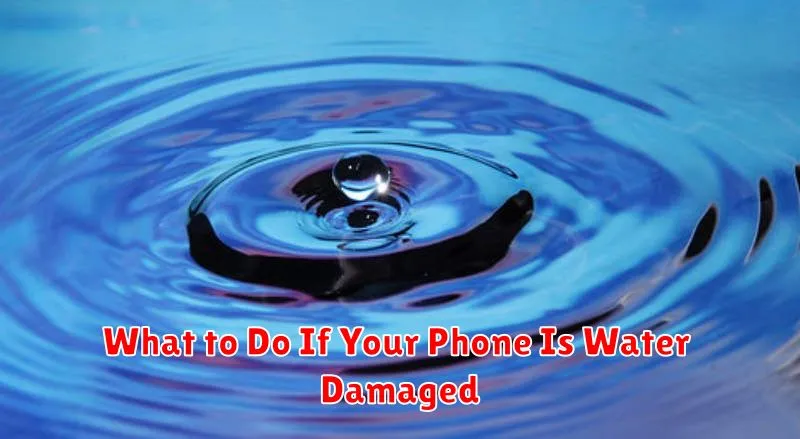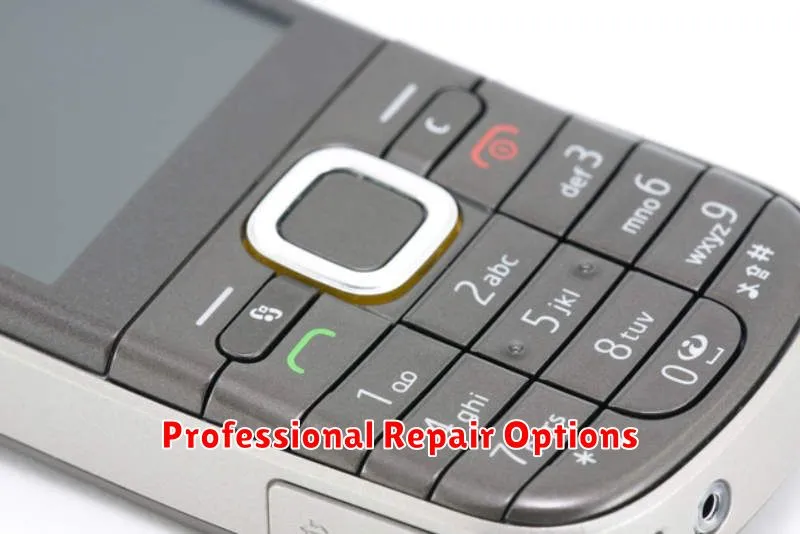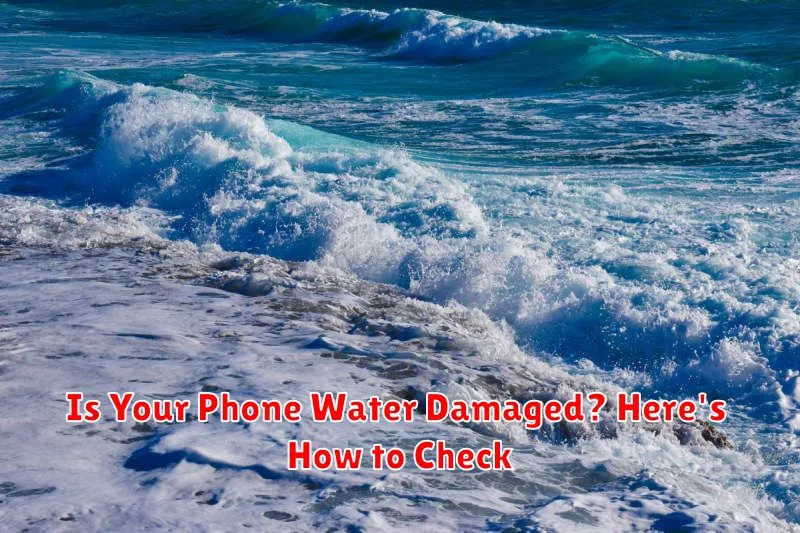Has your phone taken an unexpected swim? Dropped it in the sink, toilet, or perhaps encountered a sudden downpour? Water damage can be a serious issue for smartphones, potentially causing irreparable harm to internal components. If you suspect your phone has suffered water damage, it’s crucial to act quickly and assess the situation. This article provides a comprehensive guide on how to check for water damage on your phone, offering clear steps to help you determine the extent of the problem and potentially save your device. Learning to identify the telltale signs of water damage is the first step in taking appropriate action. From subtle clues like muffled audio to more obvious indicators like a non-responsive screen, recognizing these signs is paramount.
Determining whether your phone is truly water damaged requires careful observation and testing. This guide will walk you through a series of checks, from examining external ports for water damage indicators to utilizing built-in diagnostic tools, if available. We will cover various methods for assessing both internal and external water damage, empowering you to take informed action. Don’t let uncertainty prolong the potential harm. Learn how to check your phone for water damage effectively and increase the chances of a successful recovery.
Signs of Water Damage in Phones
Water damage can manifest in various ways, some immediately noticeable and others more subtle. Being aware of these signs can help you act quickly and potentially save your device.
Obvious Signs:
- Visible water droplets or moisture inside the screen or camera lens.
- Watermarks or discoloration under the screen.
- Corrosion or rust on metallic parts, especially the charging port.
- The phone won’t turn on or charge.
Subtle Signs:
- Distorted or muffled sound from the speakers or microphone.
- Issues with touchscreen responsiveness or erratic behavior.
- Overheating, even with minimal usage.
- Rapid battery drain.
If you notice any of these signs, it’s crucial to take immediate action to minimize further damage.
Checking the Liquid Damage Indicator (LDI)
Most modern phones include a Liquid Damage Indicator (LDI), a small sticker that changes color upon contact with water or other liquids. This is a crucial tool for confirming water damage. The LDI is typically white or silver but will turn red, pink, or a similar bright color if exposed to moisture.
Locating the LDI can vary depending on the phone manufacturer and model. Consult your phone’s manual or the manufacturer’s website for the precise location. Common locations include:
- Inside the SIM card slot
- Near the headphone jack (if present)
- Behind the battery compartment (for phones with removable batteries)
Use a flashlight to carefully inspect the LDI. A color change confirms water exposure. Important Note: While a changed LDI confirms water damage, an unchanged LDI doesn’t necessarily guarantee the absence of damage. Internal components could still be affected without triggering the LDI.
Testing Phone Functionality
Once you’ve checked the LDI, the next step is to test your phone’s functionality. Power on the device if it’s off. If it’s already on, observe for any unusual behavior.
Test the screen’s responsiveness. Try navigating through menus and opening apps. Look for any flickering, discoloration, or unresponsiveness.
Check the speakers and microphone. Make a call or play a sound to test the speakers. Use the voice recorder or make another call to test the microphone.
Test the charging port. Plug in your charger and see if the phone begins charging. If it does, monitor it for unusual heat or other issues.
Inspect the cameras. Open both the front and rear cameras and take some pictures to verify their functionality. Look for any blurring or distortions.
What to Do If Your Phone Is Water Damaged

If you suspect water damage, act quickly. Power off the device immediately to prevent short circuits. Do not attempt to turn it back on.
Remove the SIM card and any SD cards. Gently dry the exterior of the phone using a soft, absorbent cloth. Avoid using heat sources like hair dryers, which can exacerbate the damage.
A common DIY remedy involves placing the phone in a sealed bag or container with uncooked rice. This is believed to draw out moisture, though its effectiveness is debated. A better option might be silica gel packets, often found in shoe boxes and electronic packaging. These are designed to absorb moisture.
Do not disassemble your phone unless you are trained to do so. Instead, seek professional assistance. Contact your phone’s manufacturer or a reputable repair shop as soon as possible.
Preventing Water Damage
The best way to deal with water damage is to prevent it in the first place. Taking a few precautions can significantly reduce the risk of your phone getting wet.
Invest in a waterproof case. A quality waterproof case provides a strong barrier against water intrusion, offering peace of mind, especially in wet environments.
Be mindful of where you place your phone. Avoid placing your phone near sinks, bathtubs, or toilets where accidental spills are common. Keep it away from open drinks as well.
Use caution in wet weather. If you are caught in the rain or snow, try to keep your phone sheltered. A waterproof pouch or bag can be helpful.
Dry your hands before handling your phone. Excess moisture on your hands can seep into the phone’s openings.
Consider a waterproof phone. When purchasing a new phone, look for models with a high Ingress Protection (IP) rating. This rating indicates the phone’s resistance to dust and water.
Professional Repair Options

If DIY methods are unsuccessful or you’re uncomfortable opening your phone, seeking professional repair is crucial. Authorized repair centers offer specialized tools and expertise to diagnose and address water damage effectively. Remember to back up your data before handing your phone over for repair, if possible.
Contacting the manufacturer or your wireless carrier is a good starting point. They can advise on authorized service providers and potential warranty coverage. Independent repair shops are also an option, often offering competitive pricing, but ensure they have experience with water-damaged devices.
Costs for professional repairs vary depending on the extent of the damage and the phone model. Getting a quote beforehand is highly recommended. In some cases, the cost of repair may exceed the value of the phone, prompting consideration of a replacement.
Data Recovery After Water Damage
Retrieving data from a water-damaged phone can be a complex process. The extent of the damage significantly impacts the likelihood of successful recovery. While some data might be irretrievable, professional data recovery services specialize in techniques to extract information from damaged devices.
These services often involve specialized equipment and cleanroom environments to minimize further damage during the recovery attempt. The success rate varies depending on the severity of the water damage and the type of storage (internal memory vs. removable SD card).
Important Note: Attempting DIY data recovery methods after water damage can potentially worsen the situation. Consult a professional data recovery service for the best chance of retrieving your valuable information.

